Could Your Smart Tablet Be Damaging to Your Health?

Smart tablets, phones, and personal computers are all the rage in today’s technology-driven society, and it doesn’t look like the trend will ever cease. These devices have made life easier than ever before by acting as a singular storage unit for contacts, documents, money, and social networks. Despite their convenience, many companies are still loading their products with hazardous chemicals that are contributing to our environmental crisis. A new report is showing that many tablets and phones are using Polyvinyl chloride (PVC) and Brominated flame retardants (BFRs) in their manufacture, chemicals that are drastically affecting the health of consumers.
The Hidden Dangers of Technology
Today’s technology is undeniably helpful in many ways as it has improved communication, medicine, and even grassroots projects. Gadgets have also helped to improve awareness around natural health, as many people find their health information online via smartphones and tablets. Unfortunately, the hazardous chemicals used in their production can contribute to a wide range of health issues. Polyvinyl chloride, for example, contains dioxins and other chemicals that have been linked to cancer. [1] Phthalates are often added to PVC, and these chemicals have concerns for neural health. [2]
Flame retardants, despite their dubious benefits, also pose a serious threat to human health. Brominated flame retardants and PBDEs are making their way into consumers and interfering with thyroid health. [3] This new research is causing many countries to begin slowly eliminating the use of these chemicals in products like tablets and computers. Still, many flame retardants and other chemicals continued to be used in the production of smartphones, tablets, and computers, despite the research showing negative health effects.
What You Can Do to Protect Yourself Against Hazardous Chemicals
Technology is practically an unavoidable aspect of life these days, especially in the workplace. Look for companies that use fewer chemicals in their products. You can check out Greenpeace’s website to see where your favorite products are on the toxic scale. Be sure to also reduce exposure to your computer or phone’s LED lighting at night, as this may interfere with circadian rhythms. A regular cleansing or detox regime may also be helpful for reducing the unavoidable toxins you are exposed to every day. Reduce or eliminate furniture with flame retardants to provide an extra step in your protection protocol.
References (3)
- S. S. Heldaas, S. L. Langard, and A. Andersen. Incidence of cancer among vinyl chloride and polyvinyl chloride workers. Br J Ind Med. Feb 1984; 41(1): 25-30.
- Bung-Nyun Kim, Soo-Churl Cho, Yeni Kim, et al. Phthalates Exposure and Attention-Deficit/Hyperactivity Disorder in School-Age Children. Biological Psychiatry. Volume 66, Issue 10, Pages 958-963, November 15, 2009. doi: 10.1016/j.biopsych.2009.07.034.
- Kellyn S. Betts. New Thinking on Flame Retardants. Environ Health Perspect. May 2008; 116(5): A210-A213.
†Results may vary. Information and statements made are for education purposes and are not intended to replace the advice of your doctor. If you have a severe medical condition or health concern, see your physician.

Dr. Edward Group, DC
FOUNDER | HEALER | ADVOCATEDr. Group, DC is a healer and alternative health advocate, and an industry leader and innovator in the field of natural health who is dedicated to helping others. He is a registered doctor of chiropractic (DC), a naturopathic practitioner (NP), and proud alum of Harvard Business School and MIT Sloan School of Management. Dr. Group, DC is the founder of Global Healing – a mission and vision he has shared through best-selling books and frequent media appearances. He aims to spread his message of positivity, hope, and wellness throughout the world.










